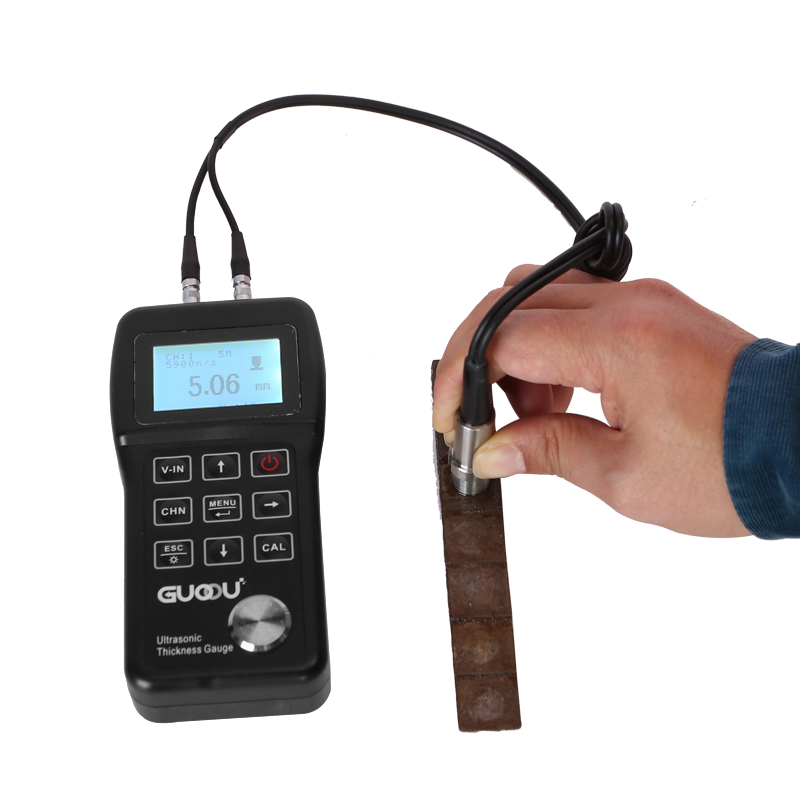Ultrasonic thickness measurement methods include resonance method, interferometry, pulse echo method and so on. Now we mainly use the pulse echo method and the measured appearance of the object to detect the thickness.

The main controller controls the transmitting circuit so that the ultrasonic waves from the probe reach the bottom of the object to be measured and reflect back. The pulse signal is taken over by the probe and amplified by the amplifier to the vertical deflection plate of the oscilloscope. The symbol generator outputs the photocathode logo, which is a pulse signal added to the vertical deflection plate at the same time. The scanning voltage is applied to the deflection plate. Therefore, on the oscilloscope, we can directly read the optical and vaginal septum between the transmitter and the ultrasound tube.
The thickness h of the measured object is: h=ct/2 where c is the propagation speed of ultrasonic waves.
In China, digital ultrasonic thickness gauges are mainly composed of integrated circuits, which can just be held in the hand, weigh less than 1 kilogram and have an accuracy of 0.01mm.
Why is couplant used in ultrasonic thickness measurement?
The ultrasonic coupling agent is used to remove the air between the ultrasonic probe and the workpiece in order to discharge. Generally, general oil or other non-corrupted liquids are used to measure the appearance of greasy parts in the workshop, and viscous butter is used to measure the rough appearance. After the measurement, the appearance of the coupling agent and the appearance of the scale block will be erased.
Why is a high-temperature couplant needed for measuring high-temperature pipelines?
Generally speaking, when the couplant resists high temperature objects, it will evaporate or dry in an instant, so it is difficult for ultrasonic waves to reach the workpiece to be measured. The high-temperature couplant is that its purpose characteristics will not change under certain high-temperature conditions, so it will measure high-temperature smooth objects.



